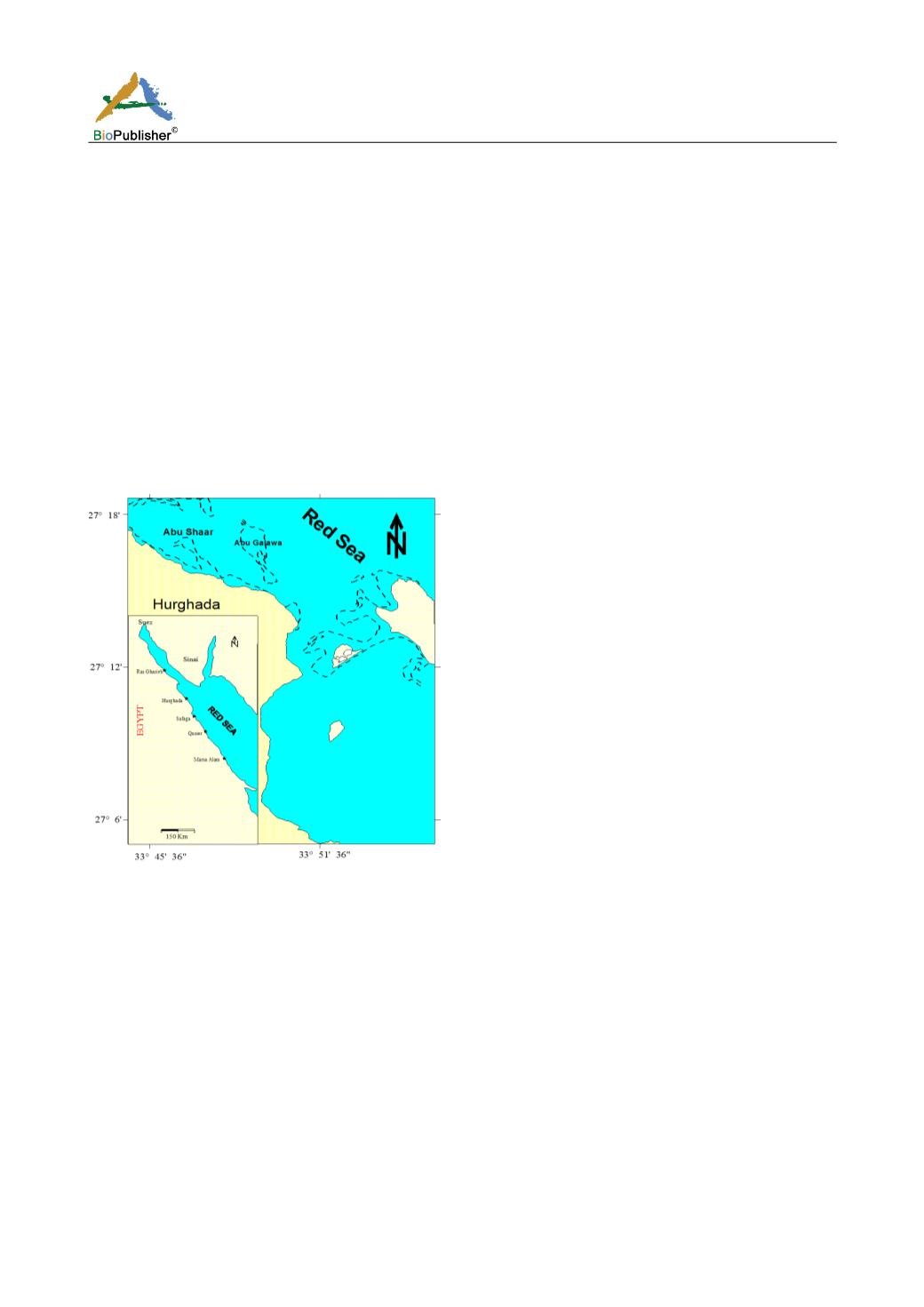
International Journal of Marine Science 2016, Vol.6, No.37, 1-5
2
As fluctuating asymmetry studies were never performed on the otolith dimensions of the species in question or on
that of the same species from other localities in Egyptian waters the present study represents the first study on fish
otolith asymmetry of the Egyptian waters.
The present work studied fluctuating asymmetry in the otolith length, width of the two parrotfish
Chlorurus
sordidus
and
Hipposcarus harid
collected from Hurghada, Red Sea coast of Egypt. It aims to provide information
related to the detection of suitable settlement habitats by the larvae of those two species.
1 Materials and Methods
Description of sampling area
Hurghada lies at the northern part of the Red Sea between latitude 27
0
10’ N- 27
0
33' N and longitudes 33
0
70' E –
33
0
85' E (Figure 1). It is located on the western coast of the Red Sea, 500km south-east of Cairo, and stretches for
about 36 kilometres along the seashore, and it does not reach far into the surrounding desert. The vicinity of
Hurghada was chosen as it represents one of the main fishing grounds for the two species in question and
asymmetry study for
Chlorurus sordidus
and
Hipposcarus harid
is important to show the effect of this
phenomenon on the settlement of the larvae in this important fishing ground.
Figure 1 Sampling area
Sample collection
Specimens of parrotfish were obtained during the fishing season 2012-2013 through monthly sampling from the
commercial landings. The fishes were caught using gill nets of 60 to 100 m long with mesh size of 2 – ¼ mm.
Standard length (SL) was measured to the nearest 1.0 mm using digital caliper. Both left and right sagittae were
removed through a cut in the cranium to expose them and then cleaned and stored dry in glass vials. Sagittae
specimens were collected from 30 specimens (150-260 mm SL) of
Chlorurus sordidus
and 30 specimens (160-
260 mm SL) of
Hipposcarus harid
of different fish length groups. Specimens with obvious evidence of calcite
crystallization or other aberrant formations were not considered for this study. Each sagittae were systematically
placed with the sulcus acusticus oriented towards the observer and the length was determined using ordinary light
microscope. The maximum length (OL) and the maximum height (OW) were measured to an accuracy of 0
⋅
01
mm, recording the greatest distance from the anterior tip to the posterior edge (OL) and the greatest distance
between the otolith dorsal and ventral margins (OW), according to Harvey et al. (2000) and Battaglia et al. (2010).
Statistical analysis
The statistical analysis was based on the squared coefficient of asymmetry variation (CV
2
a
) for the three otolith


